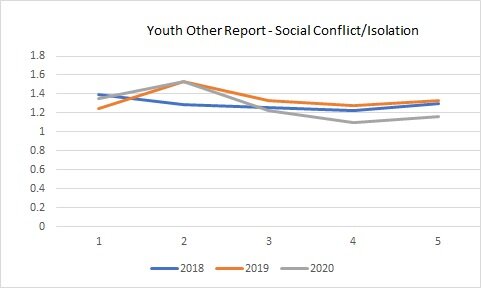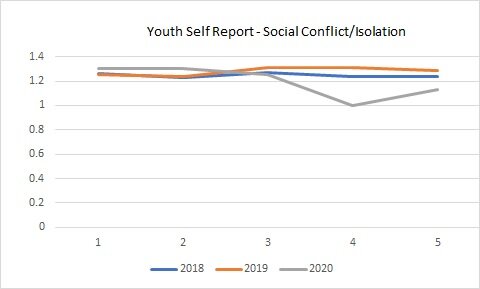Psychotherapy in the Time of Corona
Jeb Brown, PhD
Updated 5/27/2020
I titled this blog with apologies to the wonderful novel Love in the Time of Cholera by Gabriel García Márquez.
We will start to look at what the ACORN data might tell us about the level of distress among folks seeking therapy during these trying times (compared to pre pandemic times) and how the outcomes compare. As data accumulates we can also start to look at differences in video based therapy and face to face therapy. The data is still new, and growing rapidly, so I will start simply.
Several of us including Justin, Ashley and Tak from the ACORN collaboration as well as others collaborative analyzed the data as of 5/16/2020. Since then the data has continued to accumulate and I have drill down to look at results by month.
We have also added the capacity to track how many video sessions each client receives, and calculate the percent of all sessions that were video.
For this updated analysis, I divided limited the sample the cases starting treatment between January 1 and May 27 of each of the last three years. I also limited the sample to organizations that submitted data after 3/15/2020. This attempts to control for seasonal variation and to make sure we were making comparisons using the same set of organizations. Thanks to Scott Miller for this suggestion!
I divided the ACORN sample into two groups…Time of Corona and Baseline (first five months of two prior years and cases starting up to 3/15 of this year.). Time of Corona is defined as those whose initial session occurred on March 15 2020 or later. Baseline were cases starting treatment between March 15 2018 and March 14, 2020.
There are some pretty big surprises here, at least for me. I would have expected to see little difference in scores or perhaps a slight increase for the time of corona sample. My rational was that it took some effort to get out to see a therapist so that the client was likely to be motivated by higher distress. Also there appears to be broad consensus that this time of social/physical isolation and confinement to home has been difficult for kids and adults. There are many reports that spouse abuse, drug and alcohol abuse and other signs for family distress are on the rise. Likewise, there has been much speculation about possible increases in suicides.
The ACORN data appears to paint a different picture. Among those clients seek therapy during the time of pandemic intake scores tend to be the same or lower on all variables: Global Distress, Self Harm Ideation, Substance Abuse and Social Conflict/Loneliness. For adults, the differences in baseline and time of corona are small, and while there is a trend toward lower scores the differences aren’t significant.
With youth self report we get a somewhat different picture, Scores for Self Harm Ideation, Substance Abuse and Social Conflict/Isolation appear lower in the time of corona.
With youth parent or other adult who knows the child well we likewise see a lower Social Conflict/Isolation score during the time of corona.
With regards to the efficacy of video therapy, so far there is not evidence that it differences from face to face therapy.
I have posted the month by month graphs for the Social Isolation/Conflict scores for youth.
Discussion
I confess I am at a loss as to what to make of these findings. Please feel free to offer comments and suggestions.
Is it possible that we have over looked the possible beneficial effects for youth of time spent away from school and other daily activities while spending time at home with the family. Families are home together. Is there some effect for this source of emotional support?
A note of caution…results change month by month even without the effects of virus. We may find that over time the differences between time of corona and baseline simply disappear.
Among those of us looking at the data directly, there has been some speculation of a delayed onset for the results of the stress. We will be able to watch this over time. Reporting results by month will make this obvious.
For those who might be interested in looking at the results as we explored the data, here is a link to a recording from the WebEx session when we analyzed the data on 5/15.
https://www.youtube.com/watch?v=qwTerobxcvg
Youth - Parent Other Report for Social Conflict/Isolation

